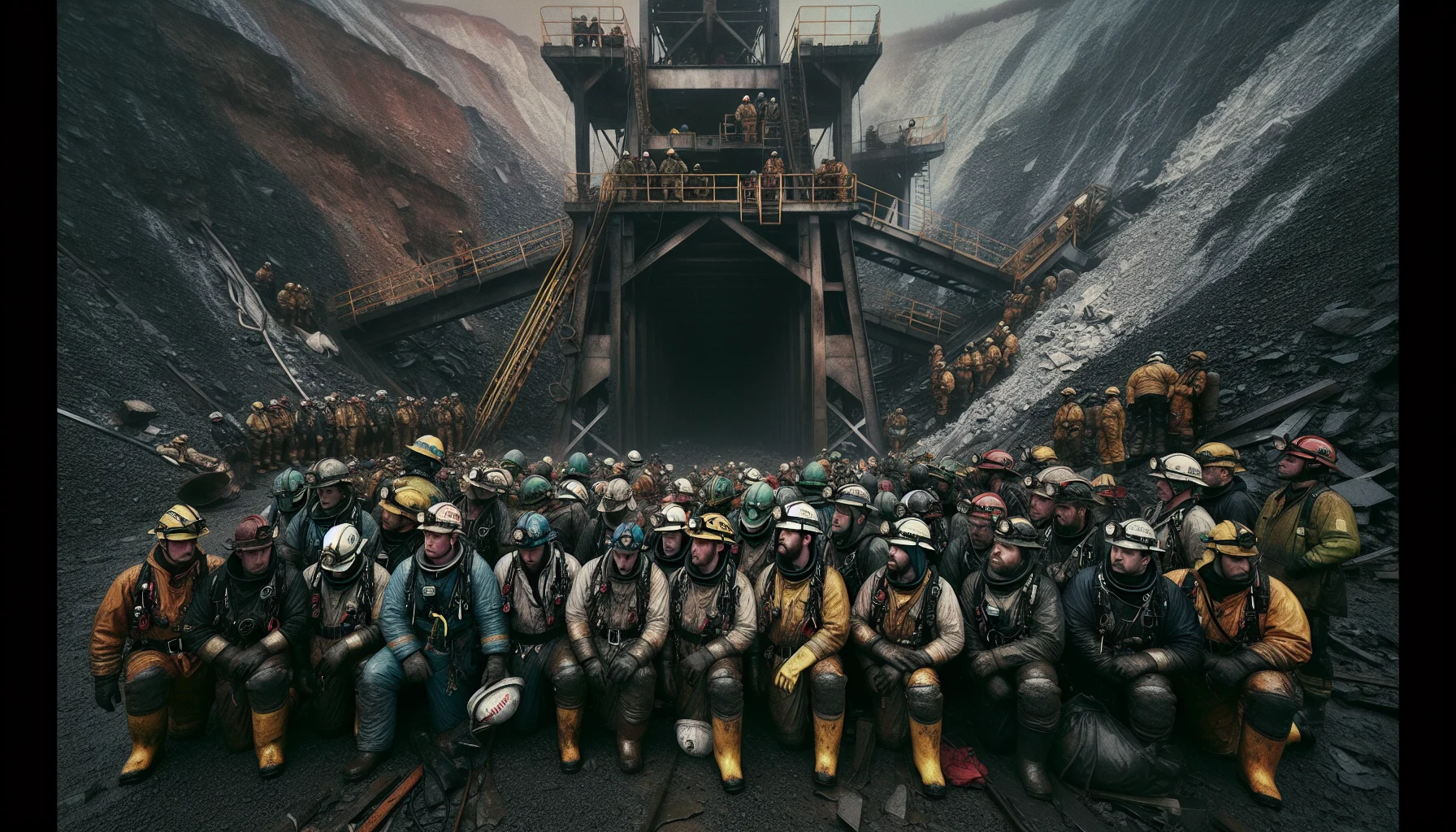
The Westray Mine Disaster
by: The Calamity Calendar Team
May 9, 1992
A Community Desperate for Hope
In the early 1990s, the small town of Plymouth in Nova Scotia was pinning its hopes on coal — and on the promise of prosperity that came with it. In 1991, when the Westray Mine opened its gates, it was seen as a beacon of hope and a shift towards a reinvigorated local economy. Owned by Curragh Resources Incorporated, the mine promised not only jobs but a pathway out of economic stagnation. However, buried beneath this optimism was a ticking time bomb, primed by rushed decisions and glaring oversights that would soon make headlines for all the wrong reasons.
The seam of coal Westray tapped into was no ordinary chunk of earth. It lay within the Foord Coal Seam, noted for its high methane content, one of nature's volatile gifts to those who dared disturb it. The gravity of mining such a seam required rigorous safety measures, yet, reports from those early days foreshadowed a brewing catastrophe. Safety took a back seat as economic goals cut corners, leaving workers and union representatives raising alarms that went tragically unheard.
A Crack in the Dark
On the morning of May 9, 1992, the ordinary met the unimaginable. At precisely 5:18 AM, as the early light of dawn teased the horizon, a spark ignited a lurking cloud of methane gas within the mine. What followed was a catastrophic explosion that tore through the tunnels and into the outside world. The force of the blast sent shockwaves not only through the mine's infrastructure but through the hearts of a community built upon its promise.
Rescue teams arrived swiftly, but the beast they faced was neither forgiving nor dormant. Methane mixed with coal dust created a lethal cocktail, deterring rescuers with the threat of further explosions. Nevertheless, they pressed on, driven by the hope of finding survivors among the heavy debris and the toxic gases that lay thick in the air.
The Toll in Shadows
The disaster claimed the lives of 26 miners, casting a pall over Plymouth thicker than even the mine's dust. Families were left grappling with an unfillable void, their grief exacerbated by anger as the full scale of negligence began to surface. The mine's destruction ran deeper than its tunnels; it extended to the livelihoods that were meant to flourish alongside its operation.
In the aftermath, a lengthy investigation uncovered the dire failures in management and regulation that had led to this tragedy. The owners of Curragh Resources saw their financial empire crumble around them, but the real price was paid in human lives and shattered futures. As rescue operations came to a solemn conclusion, the mine stood silent, never to yield its resources again.
Thanks for subscribing!
Seeds of Change
The disaster sent ripples beyond the borders of Nova Scotia, leading to a national reckoning over workplace safety. In the years that followed, a Royal Commission inquiry delved into the mine's operations, exposing the dire lapses in safety and accountability. Out of the ashes of Westray rose Bill C-45, known as the Westray Bill, passed in 2004. It wasn't just another piece of legislation; it was a turning point, holding companies and their executives criminally accountable for workplace negligence that resulted in worker harm.
This bill has since reshaped how safety is perceived and practiced within industries across Canada, ensuring that the harrowing lessons from Westray wouldn't be in vain.
Reflections on the Past
Looking back, it is irrefutable that the Westray Mine Disaster was a preventable tragedy. It serves as a grim reminder of the price of neglect and the cost of placing profit above lives. The coal that once symbolized prosperity and opportunity now stands as a cautionary tale in striving for better enforcement and the continuous evolution of safety standards.
The community of Plymouth will forever bear the scars of that May morning, but the nation's laws now work as a bulwark against history repeating itself—a legacy carved into the bedrock of Canadian labor rights.
Stay in the Loop!
Become a Calamity Insider and get exclusive Calamity Calendar updates delivered straight to your inbox.
Thanks! You're now subscribed.